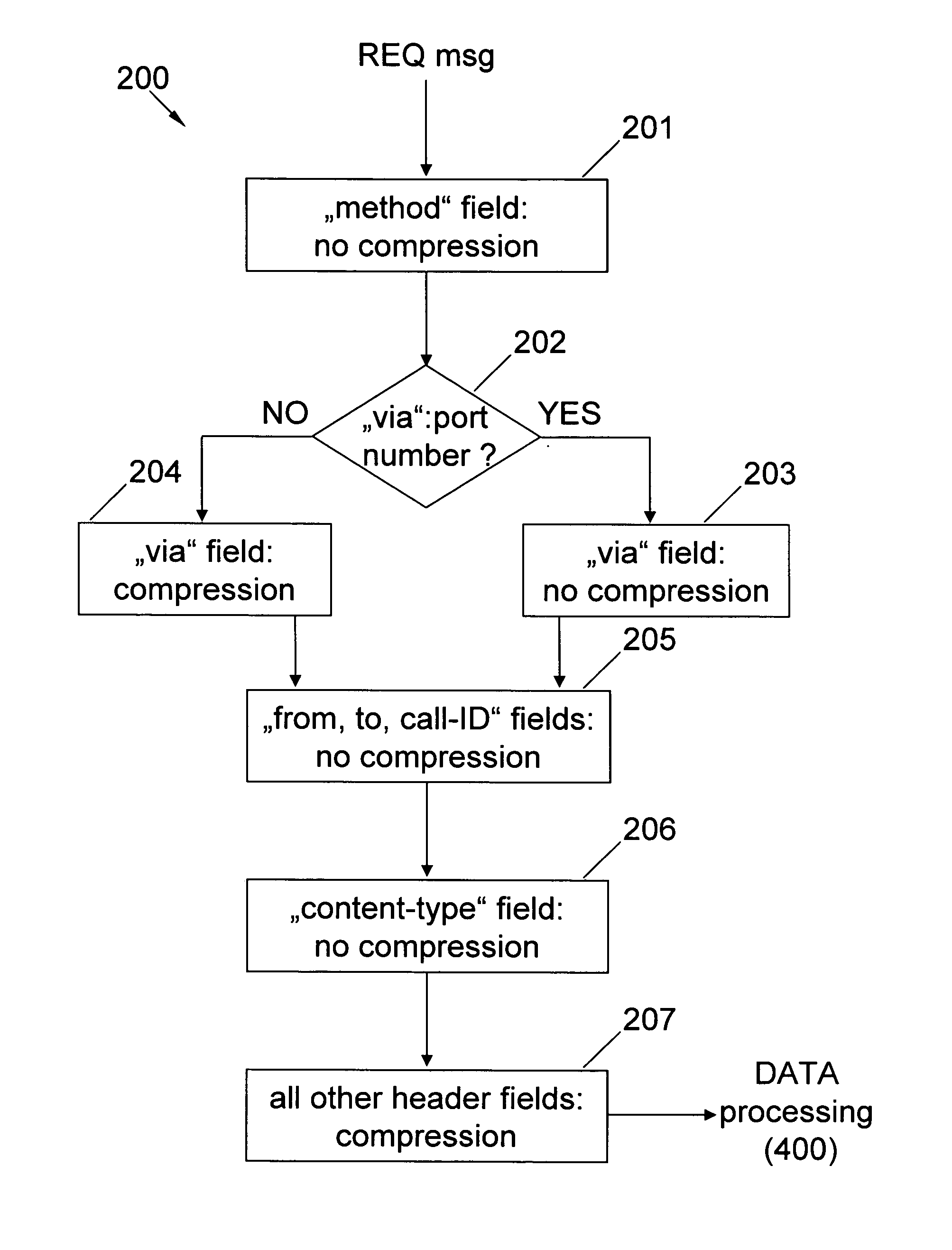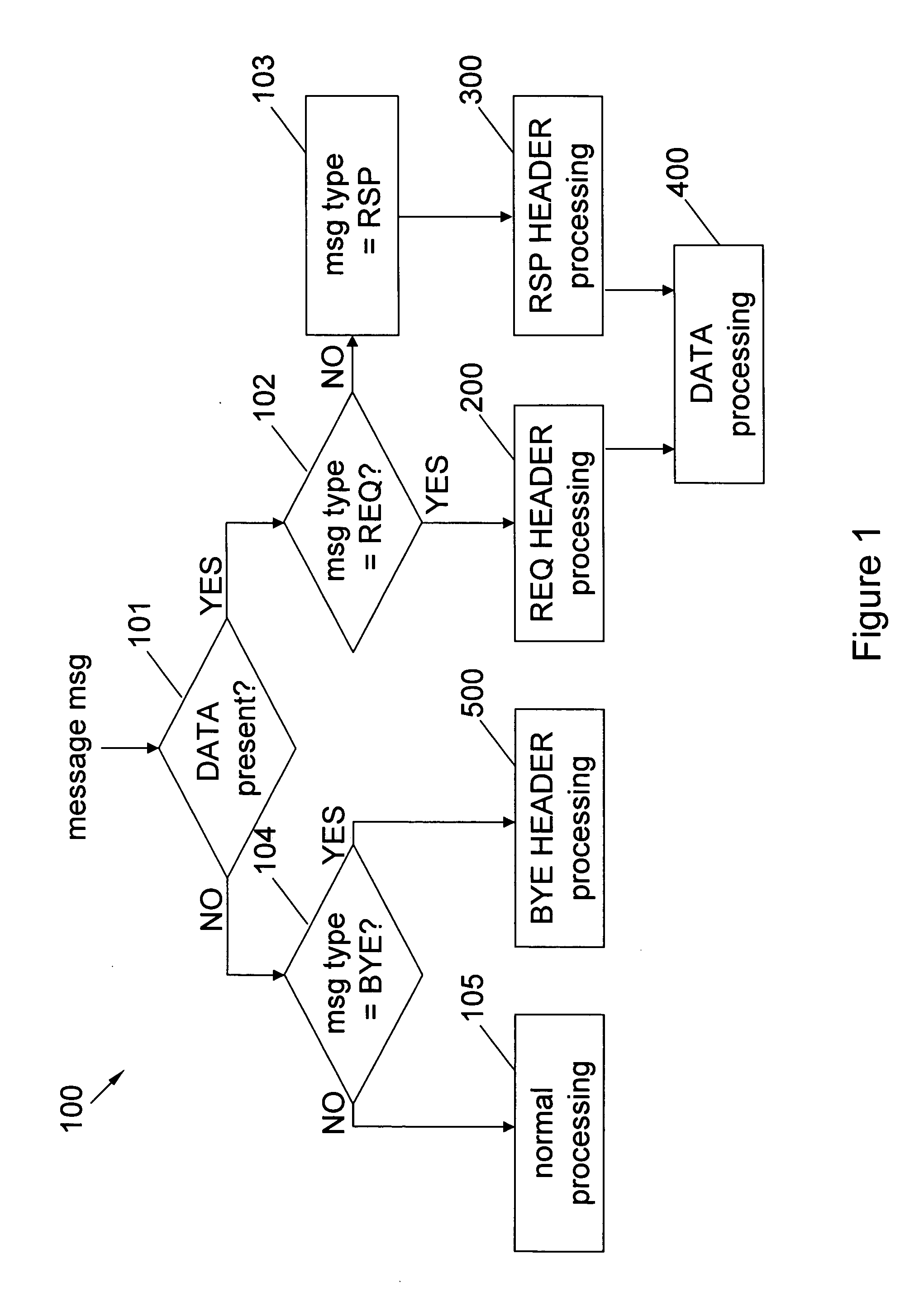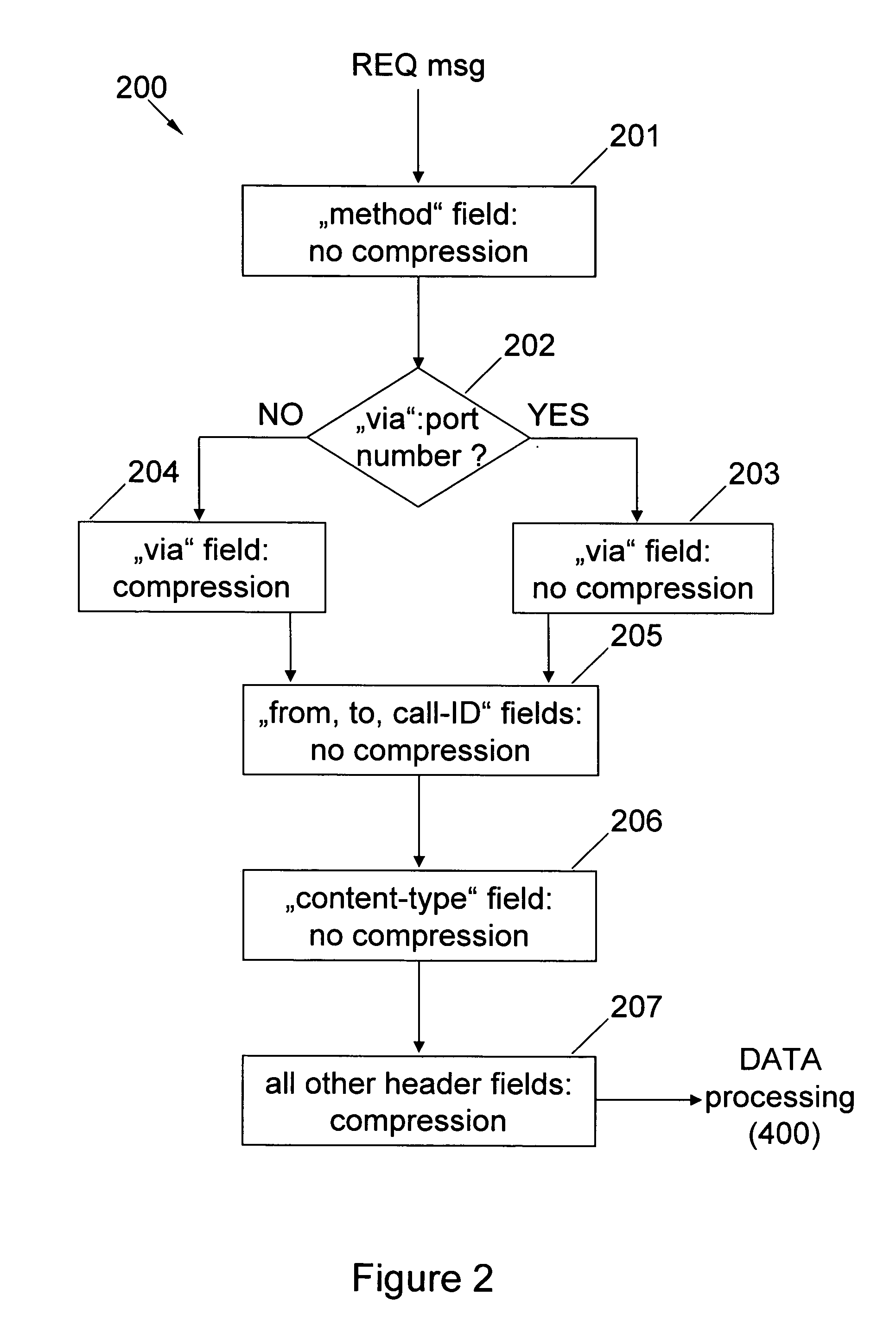Compressing, filtering, and transmitting of protocol messages via a protocol-aware intermediary node
a protocol and intermediary node technology, applied in the field of protocol messages, can solve the problems of firewalls not having access to the original message, difficult communication between two communication units, and rejection of messages, etc., and achieve the effect of preventing interoperability problems, quick deployment in the near term, and low implementation costs and/or efforts
- Summary
- Abstract
- Description
- Claims
- Application Information
AI Technical Summary
Benefits of technology
Problems solved by technology
Method used
Image
Examples
Embodiment Construction
[0087] The present invention is described herein with reference to a particular but non-limiting example. However, a person skilled in the art will appreciate that the invention is not limited thereby, and may be more broadly applied.
[0088] In particular, the aspects and embodiments of the present invention are exemplarily described in relation to the use of SIP protocol and SigComp compression, as described above. As such, the description of the embodiments given herein specifically refers to terminology which is directly related to SIP and SigComp. Such terminology is however only used in the context of the presented examples, and does not limit the invention in any way. In this spirit, it is to be noted that the ideas presented herein are also applicable when other compression schemes or protocols are used, and even with any protocol message that needs to be parsed by a protocol-aware firewall or any intermediary node in order to perform configurations to facilitate a transfer o...
PUM
 Login to View More
Login to View More Abstract
Description
Claims
Application Information
 Login to View More
Login to View More - R&D
- Intellectual Property
- Life Sciences
- Materials
- Tech Scout
- Unparalleled Data Quality
- Higher Quality Content
- 60% Fewer Hallucinations
Browse by: Latest US Patents, China's latest patents, Technical Efficacy Thesaurus, Application Domain, Technology Topic, Popular Technical Reports.
© 2025 PatSnap. All rights reserved.Legal|Privacy policy|Modern Slavery Act Transparency Statement|Sitemap|About US| Contact US: help@patsnap.com



